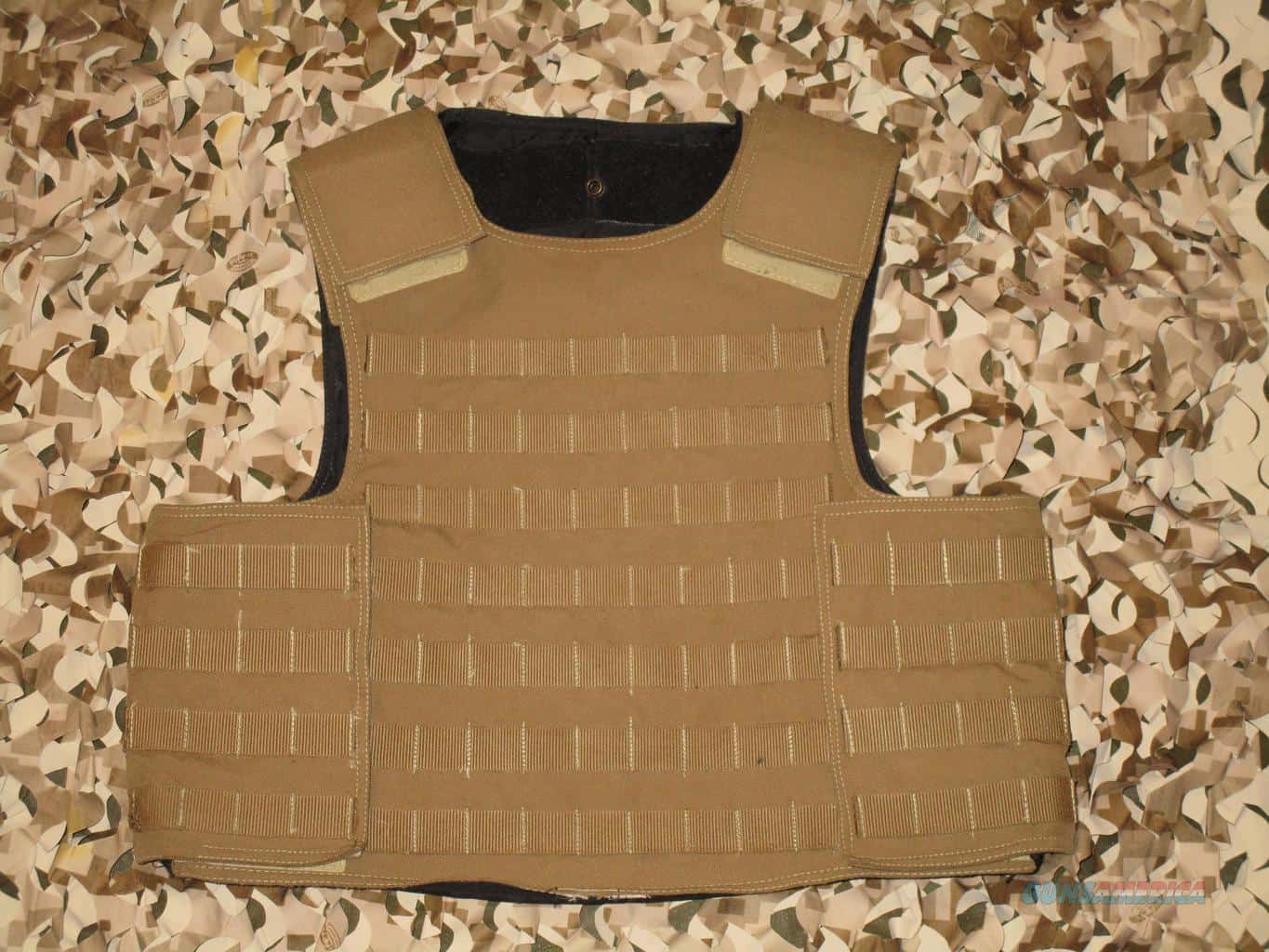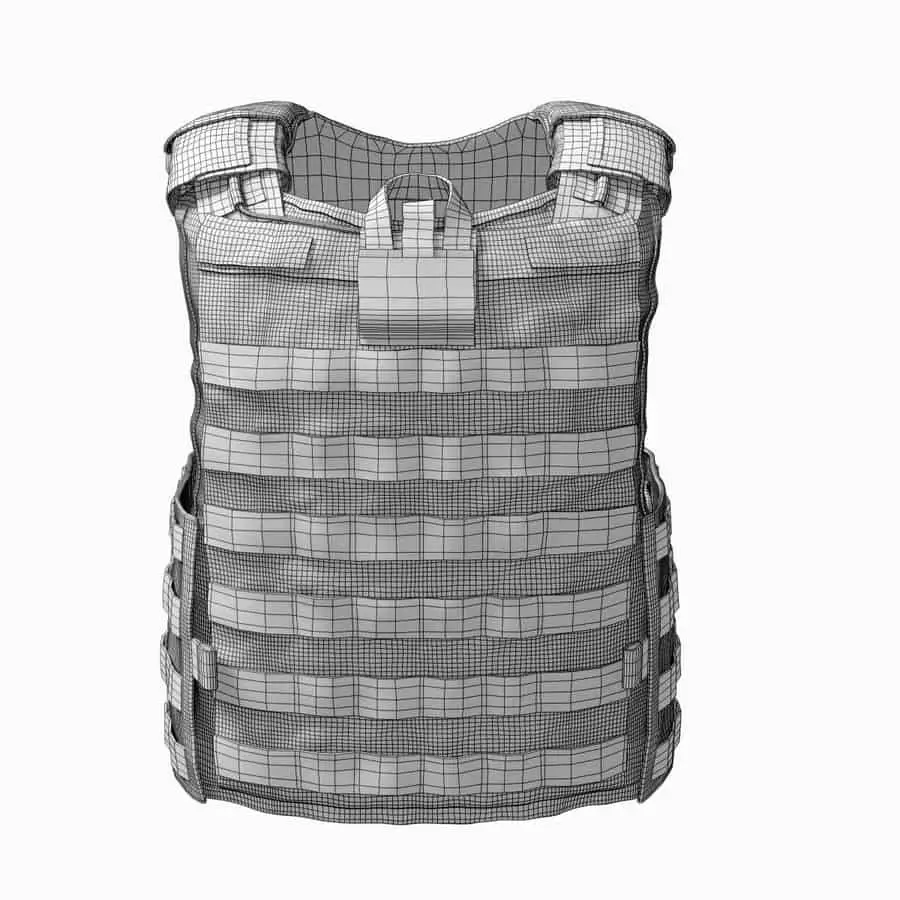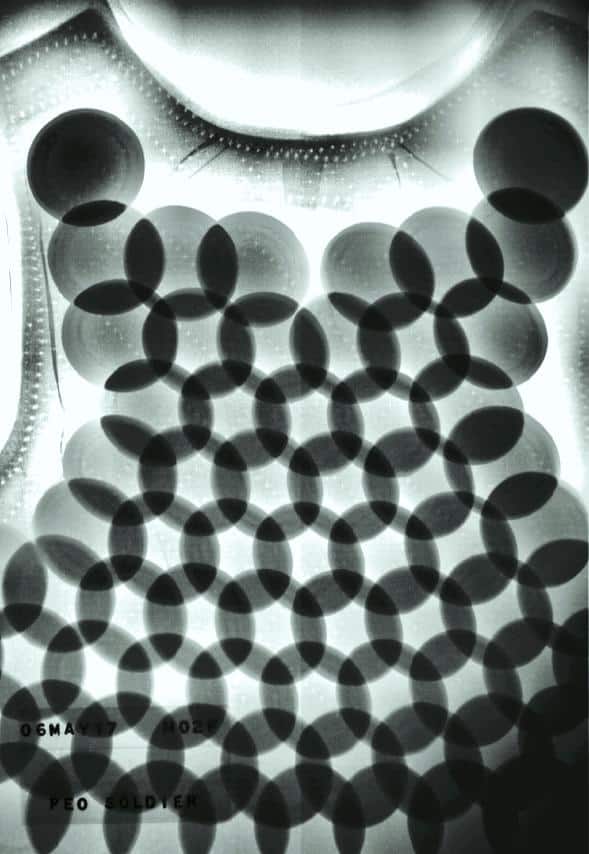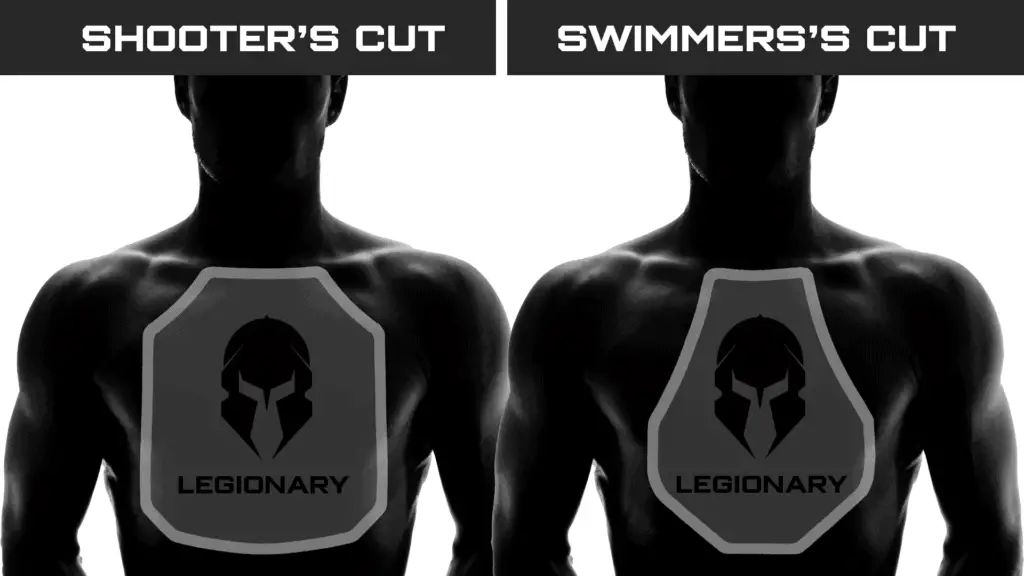FREE Tactical Pen
You can get this lightweight, powerful, and extremely durable Tactical Pen for FREE right now! Just pay a small fee for shipping… But ONLY while supplies last!
Most people will never have to worry about body armor, but there are few things more important to those who do. Having reliable protection can literally be the difference between life and death. This makes reliable armor of the utmost importance, and there was a time when many expected Dragon Skin body armor to be the armor of the future.
Dragon Skin body armor, officially Pinnacle Armor’s SOV 3000, is a flexible body armor that was marketed at a premium, costing around $5000 for a complete set. Due to problems with military testing and certification, it is currently only available from online retailers or individual sellers. When Dragon Skin body armor first appeared, it promised superior protection and unmatched flexibility. It promised innovation and a new path for body armor, but the question is, did it deliver?

The Cost of Dragon Skin Body Armor
Let us start by taking a look at the price. At around $5000 for a complete set, the Dragon Skin body armor is priced far above its competitors. In fact, at the time of its inception and fame in the mid-2000s, it cost upwards of five times more than the body armor issued to the troops in the armed forces. For example, this level IV plate is considered one of the best options on the market right now and it comes in under $500.
Why the higher price tag? Well, the simple answer is that it was supposed to provide a remarkable increase in several areas compared to the competitors. Mainly, it boasted improved flexibility and protection against multiple rounds. This means better movement and greater defensive capabilities, something most would be willing to pay for.
Under normal circumstances, even at such a high price point, there would be no way for such impressive body armor to fail on the open market. Only, it did. Not only did Dragon Skin body armor fail, not managing to pass military testing due to being found unreliable, but the company that manufactured it, Pinnacle Armor, went under.
Where to Buy Dragon Skin Body Armor?
Because of the failure of Dragon Skin body armor and Pinnacle Armor as a whole, the armor was removed from the National Institute of Justice’s list of certified bullet-resistant body armor. This means that any reputable seller cannot market this body armor as reliable, which has limited the market severely. Despite the safety concerns and lack of certification, there are ways to buy a set. If you look hard enough, you can find a retailer online or an individual seller. For instance, there are sets of the armor on eBay, and a group called Mockingbird Precision has a few sets they say have been re-manufactured to deal with the problems the armor had.
If you do decide to purchase Dragon Skin body armor, be sure that you know what you are getting. If you buy an older set, pay particular attention to the testing that this article will go through later to understand the problems with the armor. Also, take note that one of the problems the DoJ had with the armor was the warranty on the adhesive used, and it has been around 13 years since Pinnacle Armor made the last set of Dragon Skin body armor. Lastly, before you buy, ask yourself why there has not been a single piece of armor of this design on the market. Should you buy it?
Understanding Dragon Skin Body Armor
The concept of Dragon Skin body armor is one of the reasons it reached such unprecedented hype. Unlike traditional body armor, which relies on larger plates, Dragon Skin body armor utilizes overlapping two-inch circular discs made of silicon carbide ceramic. The presumed advantages of such a design are that it:
- Provides superior flexibility, allowing for a higher range of motion
- Is proficient at absorbing ballistic impact, reducing blunt force trauma
- Is able to stand up to a high number of hits compared to traditional armor
It is easy to see why body armor with such features would be attractive, especially to those in the military or law enforcement. After all, mobility is important in various situations, from moving during combat to repelling down from a building or helicopter. Furthermore, being able to rely on your armor to take multiple shots means a lot.
But what about the other specs of the armor? After all, there are other factors when considering body armor, which includes the weight of the armor, how much coverage it gives the wearer, and other dimensions that can have a major impact on its effectiveness in real-life situations.

The Specs
- Ballistic Protection: The SOV 3000, Dragon Skin’s Level IV body armor, claims to provide protection against a number of rifle rounds. This includes protecting against weapons like an AK-47 and defending the wearer from armor-piercing rounds. The armor even exceeds the requirements for fragmentation on paper.
- Flexibility: Pinnacle Armor claimed that the armor “moved when you moved.” Due to the scale-like design, the armor can wrap around the torso, allowing for far better range of motion and, as they put it, wearing soft body armor despite the superior protection.
- Size and Weight: Compared to the standard 10” X 12” tactical plates, it is supposed to provide around a minimum of 40% more coverage. However, the armor also has a greater thickness and substantial weight increase, up to 47.5 pounds and 1.9 inches thick.
The most important aspect of all body armor is protection. While being able to move factors into that, Dragon Skin body armor claims greater flexibility on top of its impressive ballistic protection specs, making it the ideal body armor, at least in theory.
The Reality of Dragon Skin Body Armor
The concept of Dragon Skin body armor was something new, and it provided an interesting take on the classic plates. Mimicking scales, the idea was to overlap them to provide greater protection while improving flexibility and movement. However, these innovative features all seemed to become big problems for the armor. Unlike traditional armor plates that remain the same throughout, the overlapping design has major points of weakness. The armor works by overlapping the edges of each individual ceramic disc. However, even though that provides greater protection at the points of intersection, it leaves the center of each disc by itself as a thin, single layer.
Another major defect of the armor is in the binding agent of the discs. An adhesive holds all of the discs together. This is the core concept of the armor, with the discs needing a flexible adhesive to keep them layered and flexible, maximizing protection without sacrificing movement. This makes problems with the adhesive a huge issue. Dragon Skin was supposed to be the future of body armor technology, promising to outperform traditional armor in every facet. However, did it?
The Bulkiness of Dragon Skin Body Armor
While the specs of the armor look good on paper, there are quite a few problems with them, such as the size. While Dragon Skin offers more coverage than traditional 10” X 12” plates, the truth is that the protection in the middle of the panel is still only 10” X 12”. While not a detriment in and of itself, it does mean more weight for no reason. The thickness can also be a problem, with 1.7 to 1.9 inches reducing some aspects of mobility. Considering other armor is somewhere around 1 inch or so, it makes a difference. In the same vein is the weight. At 47.5 pounds, the Dragon Skin body armor is well above its competitors, by more than 15 pounds in some instances.
Bulk and weight is not something that is desirable for body armor, and the Dragon Skin armor was the bulkiest and the heaviest. What does this mean for the armor?
- Coverage is only slightly better at best
- Far thicker, meaning reduced mobility in some areas
- Much heavier, which can be hurtful in a variety of situations
- Makes essential tasks like shouldering a rifle more difficult and forces the wearer to shoot in an uncomfortable position.
Overall, the armor is more cumbersome. However, Dragon Skin’s main objective was providing flexibility and ballistic protection. While thickness and weight take away from movement, the Dragon Skin body armor still bends, retaining flexibility that plates cannot match. So, the important part becomes whether it can protect against bullets.
Dragon Skin Undergoes Military Testing
With Dragon Skin body armor promising such great things, the military was curious to see how it performed. Therefore, in May of 2006, after selecting Dragon Skin as one of the armors it wished to test for potential battlefield use, it underwent a series of rigorous tests to determine its effectiveness under a variety of conditions.
These tests were conducted at the H.P. White labs, the National Institute of Justice’s certified ballistics lab used for testing body armor. During the tests, protocols meant for Enhanced Small Arms Protective Inserts (ESAPI) and Enhanced Side Ballistics Inserts (ESBI), the industry standard for body armor, were used.
The protocols for ESAPI and ESBI state that they must pass a variety of tests, including:
- Exposure to extreme temperatures
- Exposure to diesel fuel, oil, and salt water
- A 14-hour temperature cycle
Size and Weight Issues
There are many situations where size and weight will not mean much to someone needing body armor, but the same cannot be said for those in the army. After all, soldiers have to operate under a vast number of conditions, which includes moving over difficult terrain or covering long distances. In those conditions, weight matters. Therefore, prior to testing its ballistic protection, the army compared the different size aspects of the Dragon Skin body armor to the Interceptor body armor used by the army. This is the same line of body armor still used by the military today.
Differences between the Dragon Skin SOV 3000 and the Interceptor body armor:
- Weight: 47.5 pounds versus Interceptor’s 28 pounds
- Thickness: 1.7 to 1.9 inches versus Interceptor’s 1.3 or fewer inches
- Coverage: 743 square inches versus Interceptor’s 720 square inches
The differences proved staggering. The increased coverage is insignificant compared to the added weight and thickness. That is the weight of a single piece of equipment that will be utilized alongside many others, and a difference of almost 20 pounds could prove detrimental in many situations.
Ballistic Testing Protocol
Ballistic testing was performed on the armor before with spectacular results by the manufacturer, independent testers, and even NBC. But the army’s requirements were different. In fact, the army’s testing criteria surpasses the NIJ, the organization responsible for certifying bullet-resistant armor. With the goal of determining whether body armor would prove effective and reliable under the harshest conditions, the military designed a battery of tests. The conditions Dragon Skin body armor was tested against were:
- Ambient Temperature, low temperature (-60), and high temperature (+160)
- A cycle of temperatures, ranging from -25 degrees to +120 degrees Fahrenheit
- Exposure to salt water, motor oil, and diesel fuel
- Impact from a fall, essentially dropping the armor
The first step was exposing the body armor to the conditions listed above. Then, after a set amount of time, they took the armor and tested its ability to withstand projectiles. For each condition and set of armor, they tested a total of four spots, which were the front, back, right, and left side of the armor.
The Effects of Temperature and Exposure
The Dragon Skin body armor showed signs of trouble from the very start. On the very first test involving ambient temperature, the body armor was penetrated, with the front receiving full penetration on the 2nd shot. While the other shots failed to penetrate, the control condition already saw one failure. Low-temperature testing showed satisfying results, with no penetrations, but that changed with high-temperature testing. The high-temperature tests ended with all sides being penetrated on the 1st shot. On the backend of things, the temperature cycle also proved problematic, with both the 1st and 2nd shots penetrating the back of the armor.
While being exposed to water did not prove to be a problem, there was penetration on the left side of the armor after it was dropped. The armor did not hold up for long, however, with shocking results occurring when the body armor was exposed to motor oil and diesel fuel. After being exposed to motor oil, the performance of the armor took a significant dive, with both the front and back of the armor being completely penetrated by the 2nd shot. As for diesel fuel, the exposure led to 1st shot penetration on both the front and right side, and 2nd shot penetration at the back of the armor. The results were clear.

Catastrophic Failure
The results were abysmal. Out of 48 total shots, 13 penetrated the body armor. This can be seen from the very start, with ambient temperature seeing a complete penetration. However, a single penetration can be attributed to something else, to being unlucky even. After all, there is no completely bullet-proof solution. However, the flaws in the design showed themselves to be too severe. With the overlapping plates being the core concept of the armor, their successive failures are alarming. Not only are there signs of penetration due to the thin centers of the discs, but the adhesive holding everything together was the first thing to completely fall apart.
It was under high heat that the adhesive truly faltered, completely losing effectiveness. Due to the adhesives failure, the discs, no longer properly secured, shifted. Not only did they move out of position, but many dropped down, accumulating in the lower portion of the armor. With so many penetrations, the “revolutionary” Dragon Skin body armor barely passed four of the eight categories required for approval. Not only did this not meet the required protection standards for soldiers, but it displayed a dangerous reliability issue when faced with ESAPI threat baselines.
A Lasting Impact
Dragon Skin body armor took the consumer market by storm upon its release. It was touted as the future of armor, with a great number of people testing and reporting on the incredible new product. It was even featured on NBC News, which gave it rave reviews after some private testing. There were even reports of live combat effectiveness, with one private contractor saying how the armor kept him alive in a situation where no other armor would have. The hype had people buying the armor, including those in the military looking for a way to make themselves safer, despite the high price tag.
However, after being put under military scrutiny, the armor failed to deliver. In large part, this can be blamed on the level of testing. After all, under cold and ambient temperatures, the armor did relatively well, and most of those who tested the armor previously did not do so under various conditions. If not for the intense military testing, what would have happened? How many lives would have been lost because people expected it to protect them under any circumstance? It was a wake-up call, one that can be seen even today, with testing now being more stringent than ever. After all, body armor needs to be safe, always.
The Fate of Pinnacle Armor
After the results of the testing, many of Pinnacle Armor’s supporters disappeared. They tried to fight the ruling, even attempting to sue, but they were dropped by the Department of Justice and were never successful in their attempts to reverse the tests they claimed to be fraudulent.
As mentioned previously, Dragon Skin body armor is no longer available from any reputable vendor. This is because it never passed future testing. Without the armor being certified, Pinnacle Armor could not sell it, and it did not take long for the company to go under.
Now, over a decade later, both Pinnacle Armor and its Dragon Skin body armor seem to have disappeared, and it is not only the brand but the concept. The Interceptor body armor used by the military remains the same, and it still uses the same tried-and-true system as before, utilizing enhanced small arms protective inserts.
SAPI and ESAPI
Small arms protective inserts and enhanced small arms protective inserts are the body armor most people are familiar with. They are plates that can be inserted into a vest and serve as ballistic armor. They even come in various materials, including silicon carbide ceramic, the same material used by the Dragon Skin body armor.
Some things to keep in mind about SAPI and ESAPI:
- SAPI plates are classified as Level III body armor and are usually made from silicon carbide ceramic.
- ESAPI plates are classified as Level IV body armor and are usually made from boron carbide ceramic.
- SAPI and ESAPI can be thought of as plate types, with other cuts being available, such as shooters cut and swimmers cut.
Regardless of the cut, these plates are a tried and true method. Even after the disruption caused by the Dragon Skin and years of time for innovation afterward, they stand firm as the first and most reliable choice for those looking for ballistic protection.

Alternative Body Armor
With the Dragon Skin body armor being such a disaster, there is little reason to buy it. In fact, for anyone considering the option, I would recommend against it. Not only does it cost an astronomical sum compared to similar armor, but it provides subpar protection and reliability, especially now that the adhesive has had over a decade to age. If you are looking for body armor, stick with options utilizing protective inserts. Not only are they proven, but they work under a wide variety of conditions. One great option if you are looking to purchase body armor is Spartan Armor Systems.
What to Expect from ESAPI Plates?
The easiest way to explain the benefits of ESAPI plates is to compare them against what we have been talking about, the Dragon Skin body armor. To do this, we will keep in mind the specs of the disc-based armor while going over the specs of the ESAPI plates from Spartan Armor Systems. First, keep in mind that armor comes in different levels, each with its own standard of protection. The SOV 3000 Dragon Skin body armor was designed to provide maximum protection, so it was labeled as a Level IV body armor meant to protect against high caliber firearms and armor-piercing rounds. In order to ensure an accurate comparison, we will compare a similar armor from Spartan Armor Systems, one utilizing ceramic plates like the Dragon Skin body armor. The armor selected is also meant to take multiple hits to match the Dragon Skin’s claim to stand up to multiple rounds.
The Spartan Armor Systems Level IV Plate
It is important to know that this plate is NIJ certified, which is something you should look for with any body armor you purchase. Here is what to expect from the armor plates:
- Ballistics Protection: After being tested by an NIJ certified lab, it was found that this plate could defeat between 5 and 7 M2AP rounds. This means protection against armor-piercing rounds, the highest level of protection. Moreover, each plate can handle multiple hits without breaking.
- Size and Weight: Each plate provides 10” X 12” coverage and weighs around 7 pounds, with one being needed in both the front and the back. As for thickness, it comes in at around 1 inch. It is also a single-curve plate and is SAPI/ESAPI-cut.
- Reliability: The plate utilizes a patented tile array, which mitigates the damage and cracking upon impact. This means higher plate-integrity and improved reliability. It also comes with a water-resistant cover and is strong enough to keep working in the harshest of conditions.
The Obvious Choice
Looking at the specs, there is little more to be said. When it comes to ballistics protection, the poor performance of the Dragon Skin in harsh environments is already a killing blow. However, even putting that aside, the performance of the Spartan Armor Systems plates is more than impressive.
Not only do the Spartan Armor Systems plates provide superior protection, but they do so with less weight and reduced size. It even boasts better reliability, making it the obvious choice when comparing the two. While it may still lose out in flexibility, there is no contest between that and protection.
This does not just hold true with Spartan Armor Systems, either. As a whole, Dragon Skin body armor cannot compete with the reliable alternative that is insertable plates. Even if we were to toss aside performance as a whole, the longevity of solid plates over discs held together by an unreliable adhesive is a no brainer.
Conclusion
Dragon Skin body armor may seem like an interesting concept, but it is unreliable. While you can find and buy it over the internet, it stopped being made for a reason, so doing so could mean gambling with your life. With body armor being so important for those who need it, and with there being great alternatives, there is no reason to take the risk.
OUR RECOMMENDED TACTICAL GEAR LIST:
- Best Health and Fitness Tracker, Whoop. Get 1 Month Free: See it here!
- EDC Assisted Opening knife we can’t live without: See it here!
- Best EDC Concealed Carry Pistol: See it here!
- Extreme Performance Morning Dink: See it here!
- Best 3D Printer For Gun Parts and Accessories: See it here!
- Our Top Rated EDC Flashlight: See it here!
- AR Red Dot Sight We Can’t Live Without: See it here!
- Best Handgun Safe For Quick Access: See it here!
- Top Wireless Security Camera For Home Security: See it here!
- The Range Bag You’ve Always Been Looking For: See it here!
- CIA Approved Sharp Shooting Course: See it here!


